Featured Comment:
“This was super easy and tasted phenomenal! I was curious about the peanut butter but it turned out delicous. I will be making this again.”
– Morgan
What is Tan Tan Ramen (Tantanmen)?
Tantanmen (担々麺), or Tan Tan Ramen in English, is a delicious, spicy, and nutty ramen dish topped with ground pork and pak choi. The broth has a rich sesame flavor, and the meat is seasoned with Chinese-style chili bean sauce (tobanjan) for an extra kick.
It’s probably one of my favorite ramen dishes, although, for most Japanese people, it’s not the first thing to pop to mind if someone says “ramen.” Tantanmen is in a league of its own and part of Chuka (Chinese-inspired Japanese) cuisine!
Tantanmen is believed to be inspired by a Szechuan dish called “Dandan mian” noodles. If you’ve tried dan dan noodles before, you might realize they’re pretty different from Japanese tantanmen. Dandan noodles are spicier and served in a thick sauce rather than a broth, and they use thin noodles rather than the curly yellow noodles used for ramen.
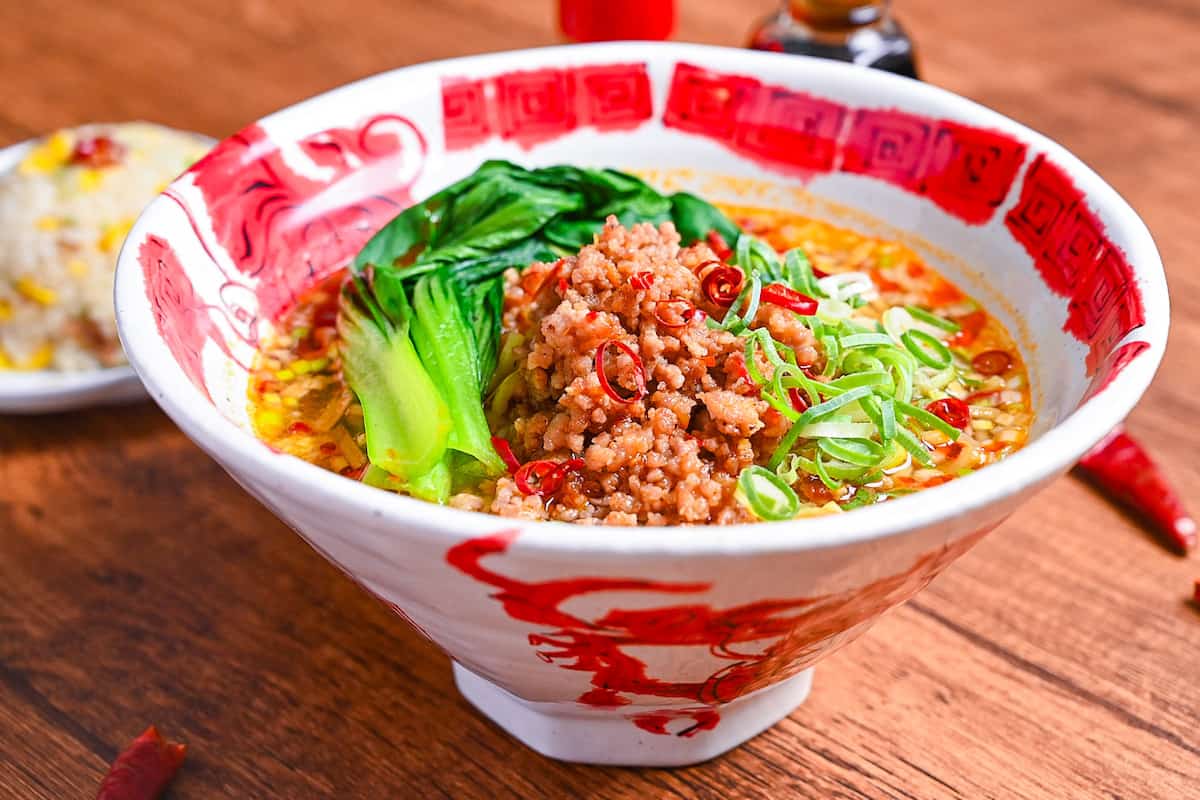

How I Developed This Recipe
I wanted to create a recipe for Tantanmen that would capture the taste and quality you’d find in a restaurant in Japan, while also making the cooking process straightforward and accessible.
Tantanmen is a dish known for its rich, spicy, and savory flavors. I wanted to make sure that anyone could recreate this restaurant-quality meal at home.
After a lot of trial and error, I finally came up with a recipe that I think strikes the perfect balance between authenticity and simplicity. I’m excited for you to try it!
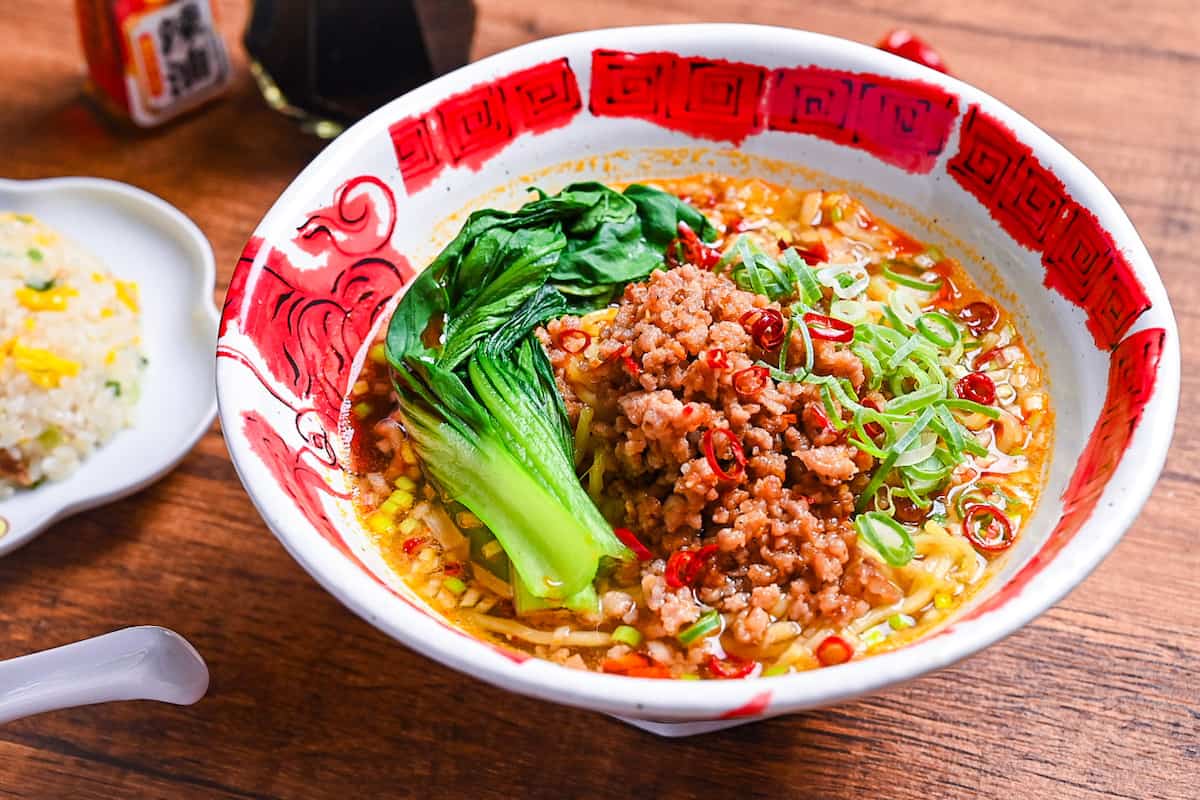
Ingredients & Substitution Ideas
For the ground meat:
- Japanese leek: Just use the white part of the leek. Finely chopped onions are a good substitute.
- Sesame oil: A little toasted sesame oil gives the meat a rich, nutty flavor.
- Ground pork: Ground pork is the best choice, but feel free to experiment with ground chicken or beef for different flavor profiles.
- Sugar: While regular white sugar is fine, I tend to use light brown cane sugar for a subtle molasses note that goes well with the savory flavors.
- Soy sauce: Go for a high-quality Japanese soy sauce. For more detailed advice on choosing the right soy sauce, check out my detailed guide to soy sauce in Japanese cuisine.
- Ginger and Garlic: Fresh ginger and garlic are the best way to get a great aroma. If you’re looking for a quick alternative, you can use ginger paste or garlic paste.
- Chili bean sauce: One of the most important ingredients. It is called Toban Djan (豆板醤) and adds a lot of depth and a spicy kick.
For Tantan Broth:
- White sesame paste: In Japanese, it’s called nerigoma (練りごま). If you’re looking for a tasty alternative, try using smooth peanut butter or tahini.
- Ground sesame seeds: They are great for adding a little extra flavor to your Tantanmen. It’s called surigoma (すりごま) in Japanese.
- Tsuyu sauce: This soy sauce-based condiment is flavored with sake, mirin, and dashi. If you’re looking to make your own, you can find my recipe for tsuyu sauce here. You can also just use soy sauce with a little sugar or mirin.
- Rice vinegar: It adds a subtle tang. If you can’t get it, white vinegar is a good substitute.
- Chili oil: Go for a sesame oil-based chili oil for the best flavor. You can also try making your own rayu using my recipe!
- Chinese-style chicken bouillon powder: This is what makes up the soup base. You can use Western-style bouillon powder, but check out my tantanmen video for the exact ratios.
Noodles and Toppings:
- Ramen noodles: Fresh ramen noodles are the way to go. For the ultimate experience, why not try making your own using my homemade ramen noodle recipe? If you can’t get fresh noodles, you can use my spaghetti ramen hack or a good store-bought brand (some recommendations are on my storefront page below).
- Bok choi: This leafy green is the perfect match for tantanmen. If you need to, you can use spinach or similar tender greens instead.
- Chopped green onions: Used for garnish. If you want to know how to cut them correctly, see my guide article on green onions.
- Chili oil or/and dried chili – Add more chili oil or dried chili if you want extra spiciness.
Tantanmen can easily be adjusted to suit plant-based diets. Swap the pork for ground tofu or “texturized vegetable protein” (TVP) and use vegetable stock instead of chicken stock.
Jump to Full Recipe Measurements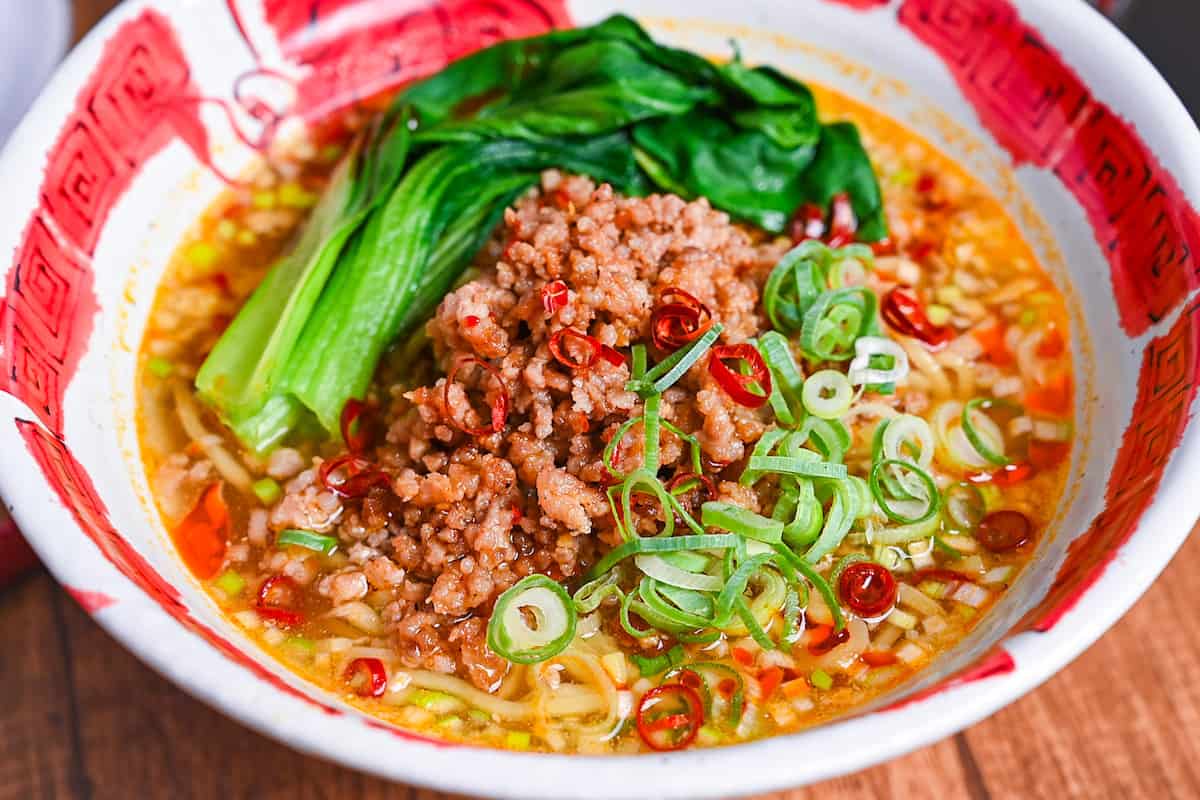
Visual Walkthrough & Tips
Here are my step-by-step instructions for how to make Tantanmen at home. For ingredient quantities and simplified instructions, scroll down for the Printable Recipe Card below.
Finely dice the green onion. Set aside half to cook with the pork and the other half to mix with the sauce later.
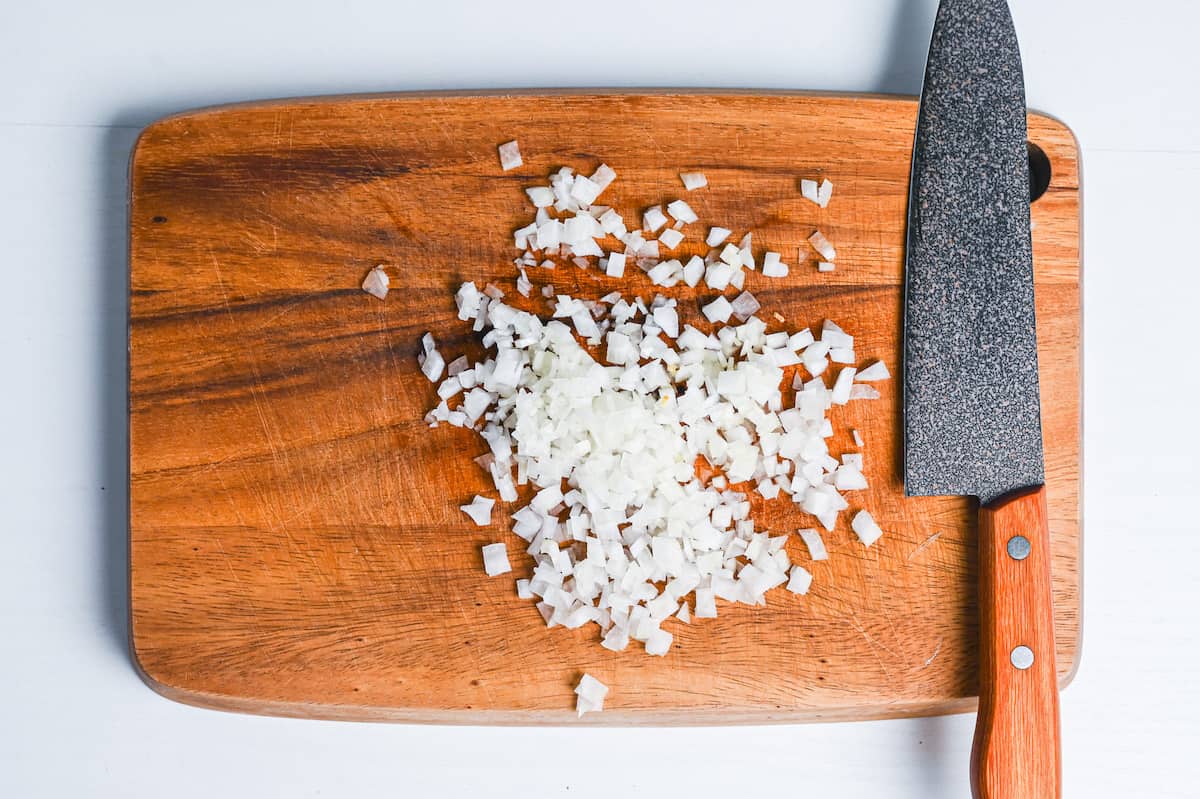
Heat a pan on medium and add sesame oil. Once hot, add ground pork (or ground meat of your choice) and sprinkle with salt and pepper. Fry until the meat is sealed.
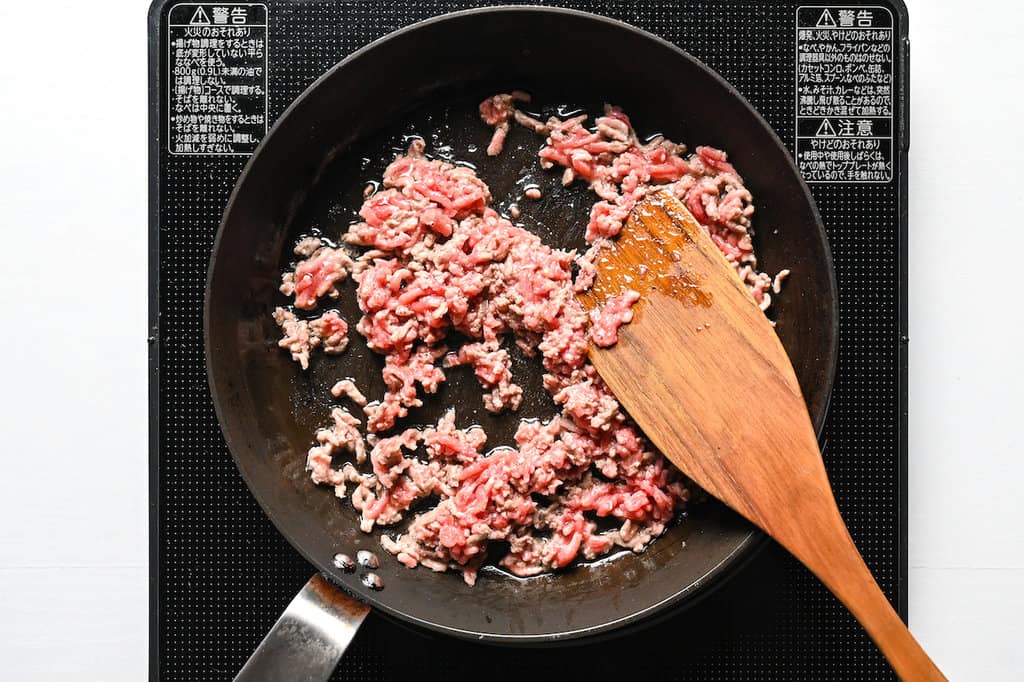
Once sealed, add finely diced green onion, grated garlic, grated ginger, sugar, soy sauce and the Chinese chili bean sauce.
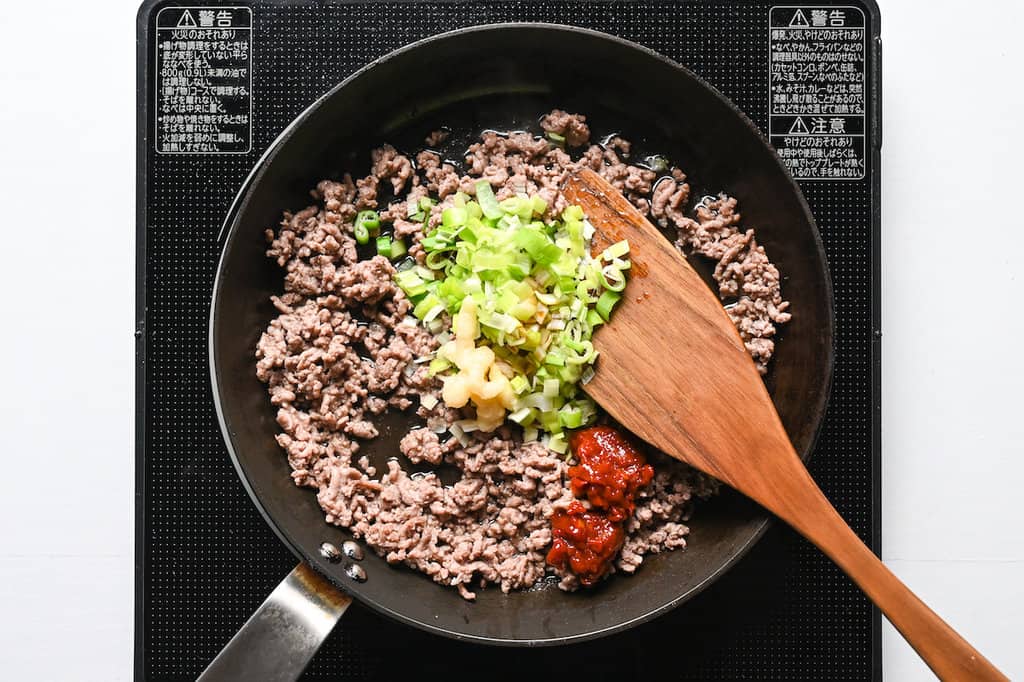
Stir fry until all the liquid has gone, and then remove from the heat. Place a lid on the pan to keep the meat warm while you prepare the broth and noodles.
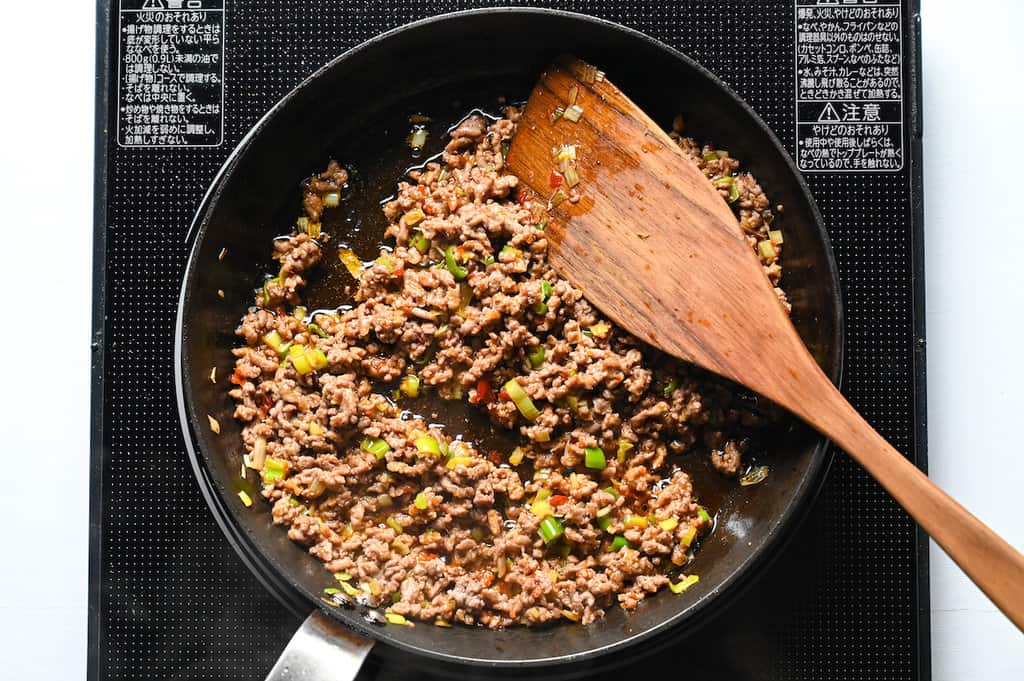
Start boiling a pot of water to cook your noodles.
While you wait, take out one bowl for each serving and add the following to each bowl: 1 tbsp tsuyu (or soy sauce), 1 tsp ground sesame seeds, ¼ tsp rice vinegar, 1 tsp chili oil, 2 tbsp sesame paste (or smooth peanut butter) and a sprinkle of finely chopped spring onion. Mix until well combined.
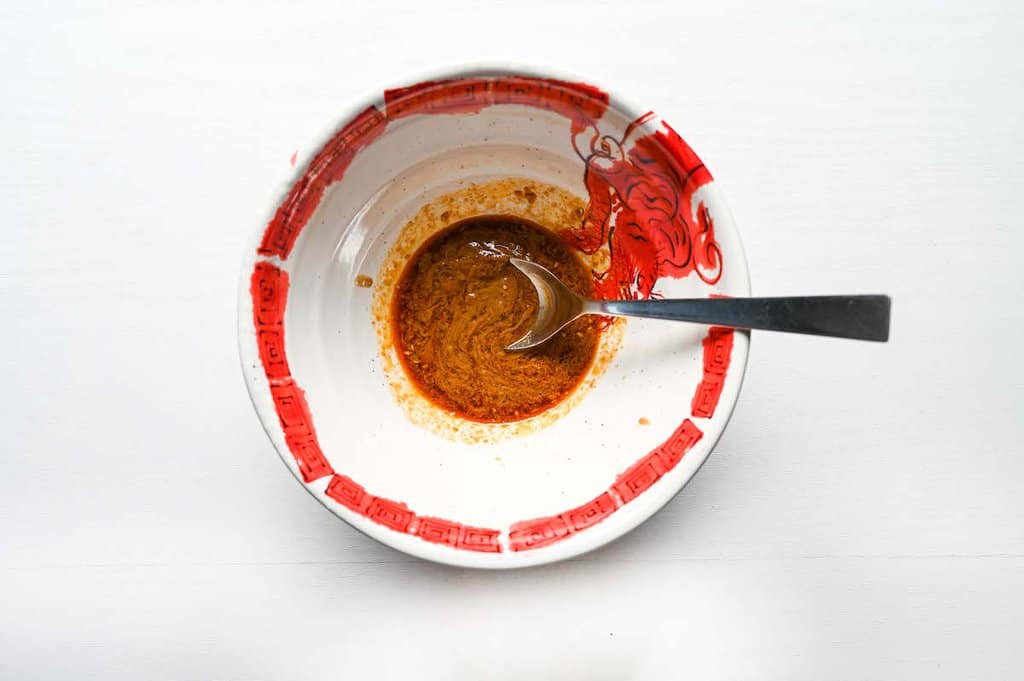
If making this recipe for a lot of people, save time by mixing the tare in a jug and then pouring an equal amount into each serving bowl.
Boil the water for the broth and mix in the Chinese chicken bouillon powder until dissolved. Pour an equal amount into each bowl and whisk to combine.
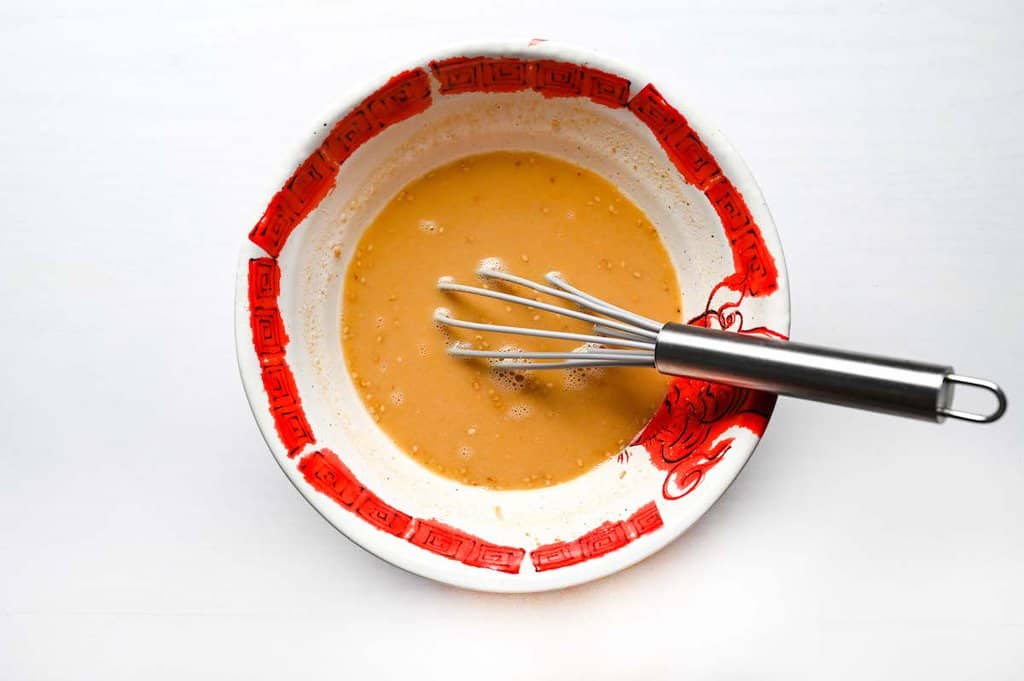
I make this recipe with pre-boiled noodles that only take 2 minutes to cook. To prevent the broth from going cold, do this step later if you are using noodles that take more than 5 minutes cook. (Alternatively, you can microwave the broth to reheat right before serving.)
Wash the pak choi and cut off the roots.
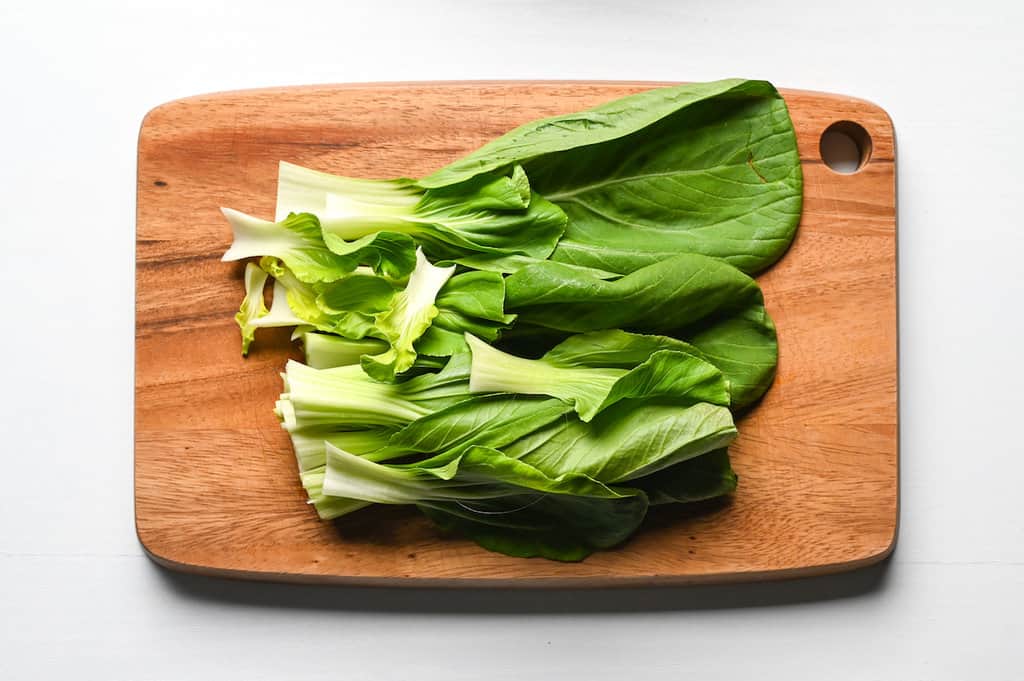
Once the pot of water comes to a rolling boil, add the noodles and set a timer for 1 minute less than the time stated on the packaging.
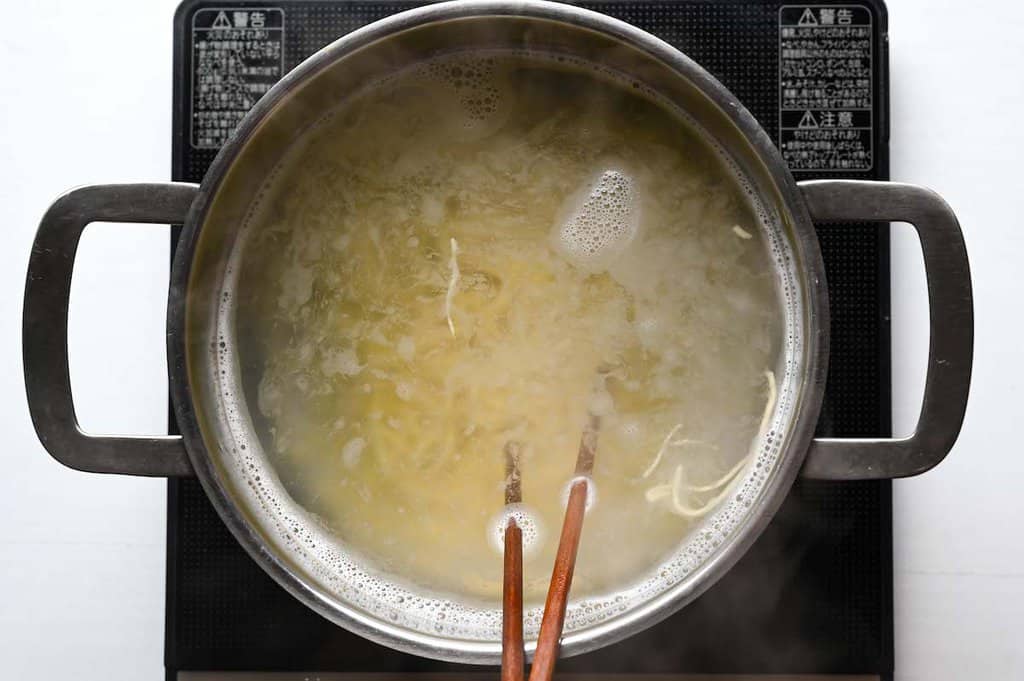
When the timer goes off, add the pak choi and blanch with the noodles for 1 minute.
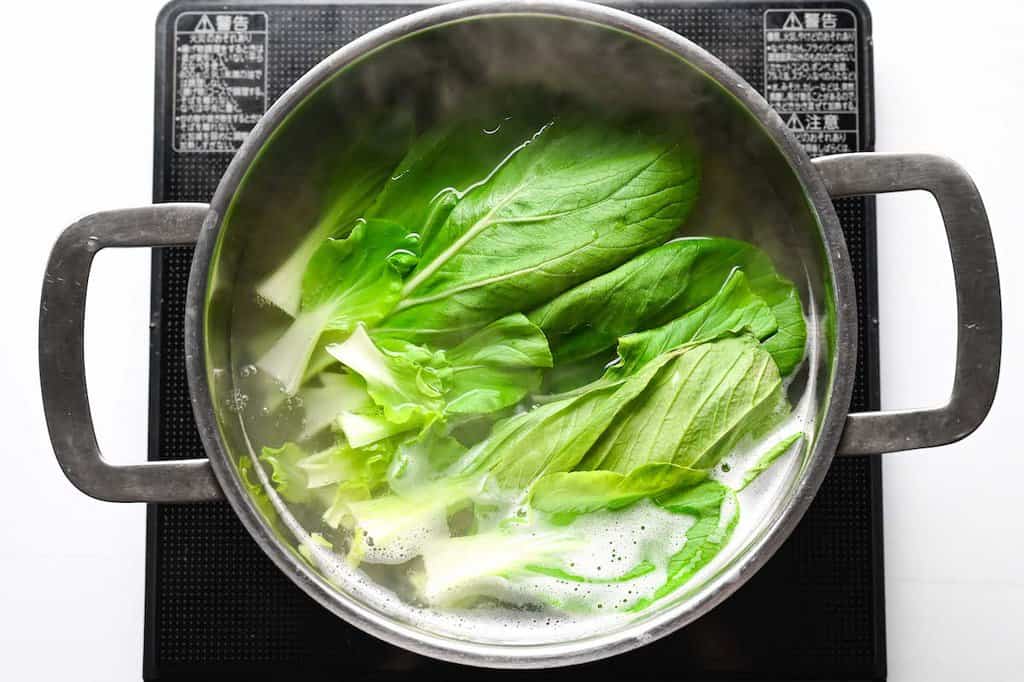
Remove the pot from the heat and pour through a colander to drain the water.
Place a portion of noodles in each bowl and top with the seasoned pork mince.
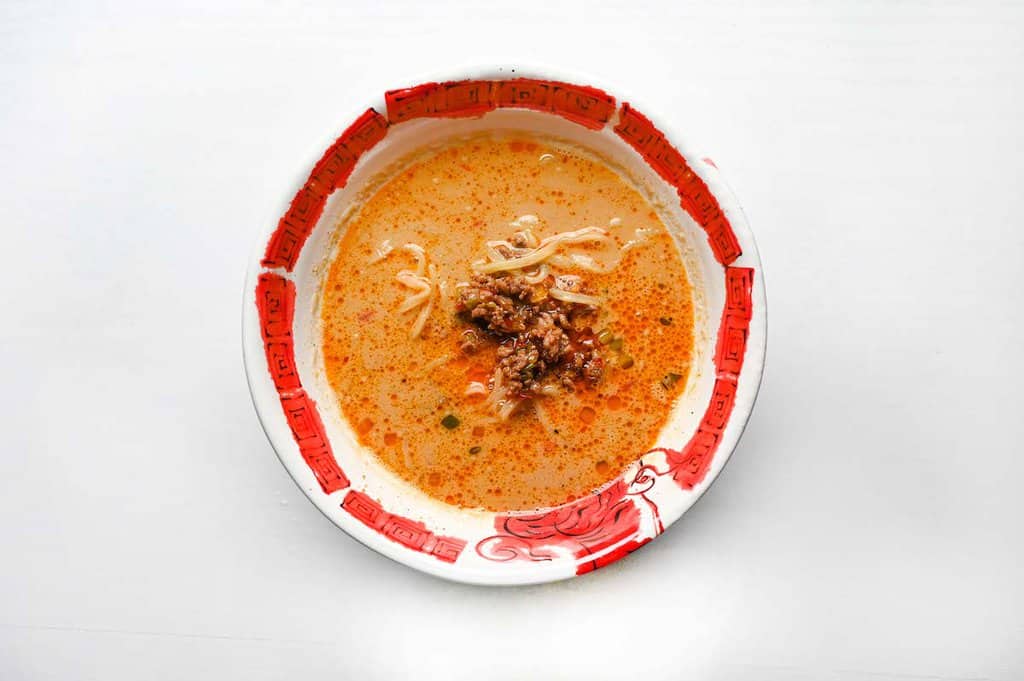
Garnish with pak choi and thinly sliced green onion.
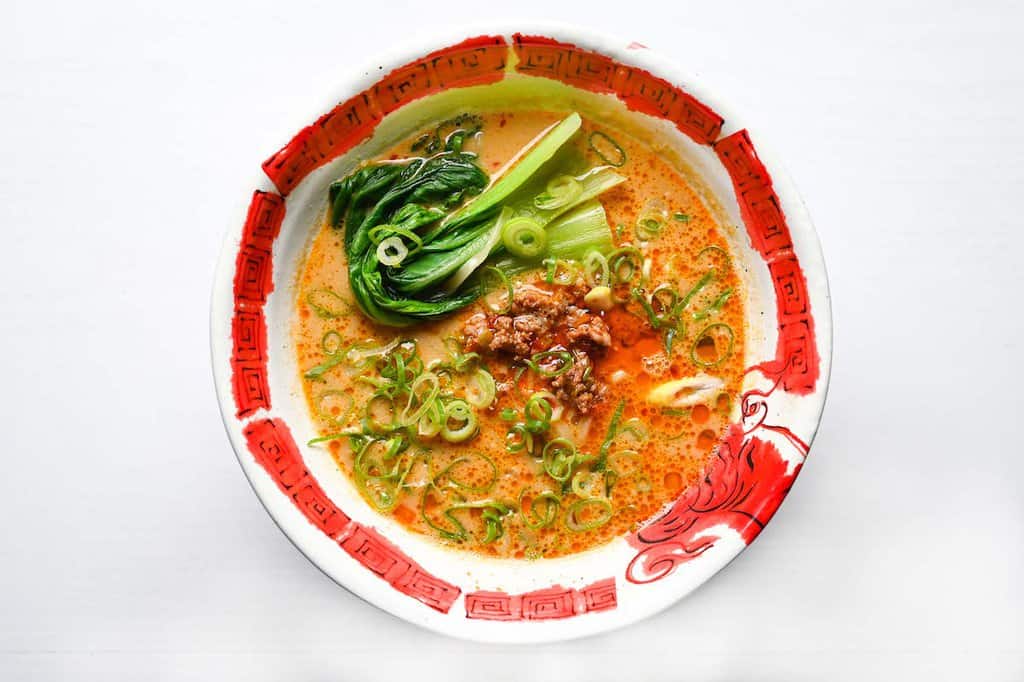
Enjoy!
Jump to Full Recipe MeasurementsHow to Store
Ramen is generally not ideal for storing, but if you want to store leftovers, it is best to keep only the broth, not the noodles. Excess broth can be stored in a container in the refrigerator or freezer and later reheated on the stove or in the microwave.
To enjoy, cook fresh noodles and add them to the reheated broth. If refrigerated, the broth should be consumed within two days, and if frozen, within two weeks.
Storage summary
Room temperature – Not recommended.
Refrigerated – About two days (broth only)
Frozen – About two weeks (broth only)
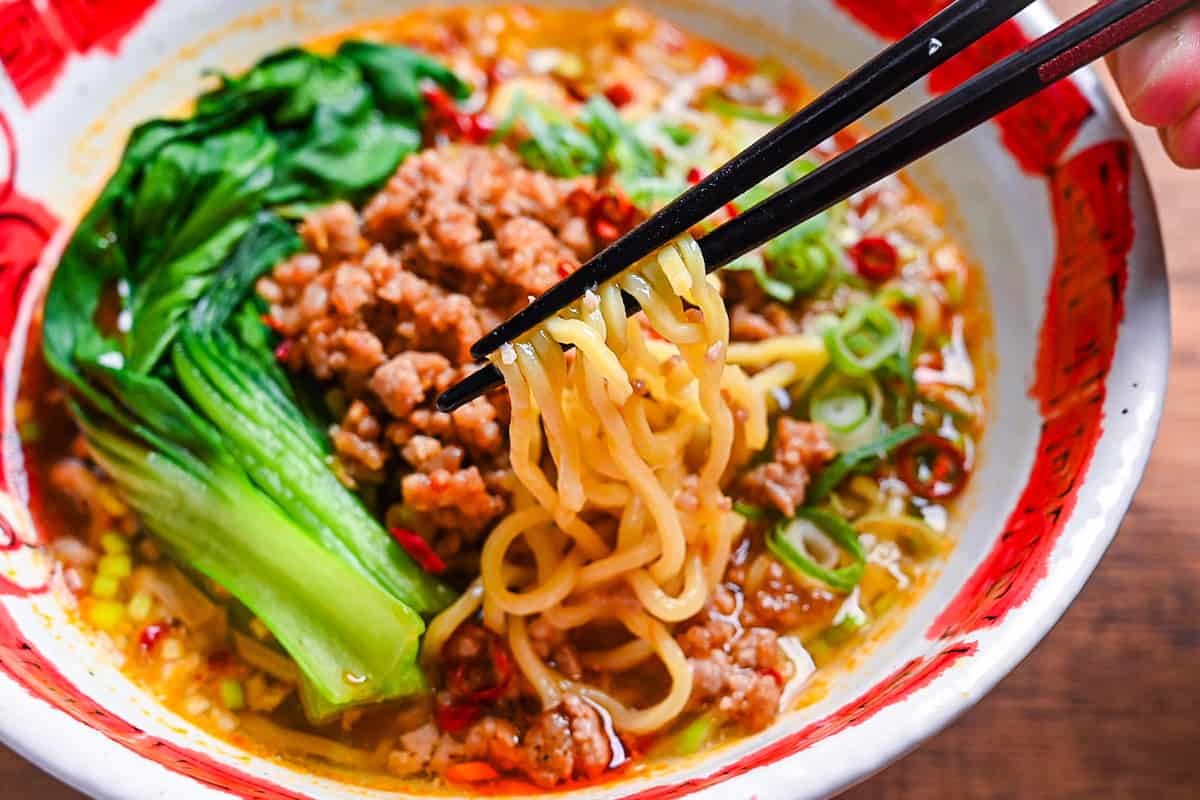
FAQ
The history goes back to one of the most famous Chinese-born chefs called “Chén Jiànmín (陳建民)”, who came to Japan in the 1950s. He is the most significant contributor to well-loved Chuka dishes in Japan. Tantanmen is one of the examples of dishes he introduced to Japan and modified to Japanese tastes.
Other famous dishes introduced by Chen include Mopo Tofu (麻婆豆腐), Ebi chili, and Ebi mayo. Since then, Tantanmen has been loved for decades, and now different forms of Tantanmen have been created in various regions across Japan, such as:
Katsuura Tantanmen (Extra spicy and hot)
Shirunashi Tantanmen (Soupless Tantanmen)
Odawara Tantanmen (Thicker soup with a sweeter taste)
Of course, if you go to supermarkets or convenience stores in Japan, you will see multiple instant Tantanmen! This just shows how much we love Tantanmen!
You might be wondering if there are any differences between ramen and tantanmen. Long story short, there aren’t any. That is because ramen is just a broad term for Japanese noodle dishes inspired by Chinese cuisine, and tantanmen is just one example of many types of ramen.
For example, in Japan, if I say, “I want ramen in a restaurant,” I would be asked, “What kind of ramen?”. Each type of ramen has its own name and distinct broth, such as miso ramen, shoyu ramen, or shio ramen.
Tantanmen is a dish inspired by Chinese dan dan mian. Although they look and taste different, the origin of this dish is in China, and it was introduced to Japan and customized for the Japanese taste.
Unlike other shoyu and shio ramen, this noodle dish has a mixture of sweet and spicy flavors, and the soup is nutty and thick.
You can replace it with soy sauce and a bit of sugar!
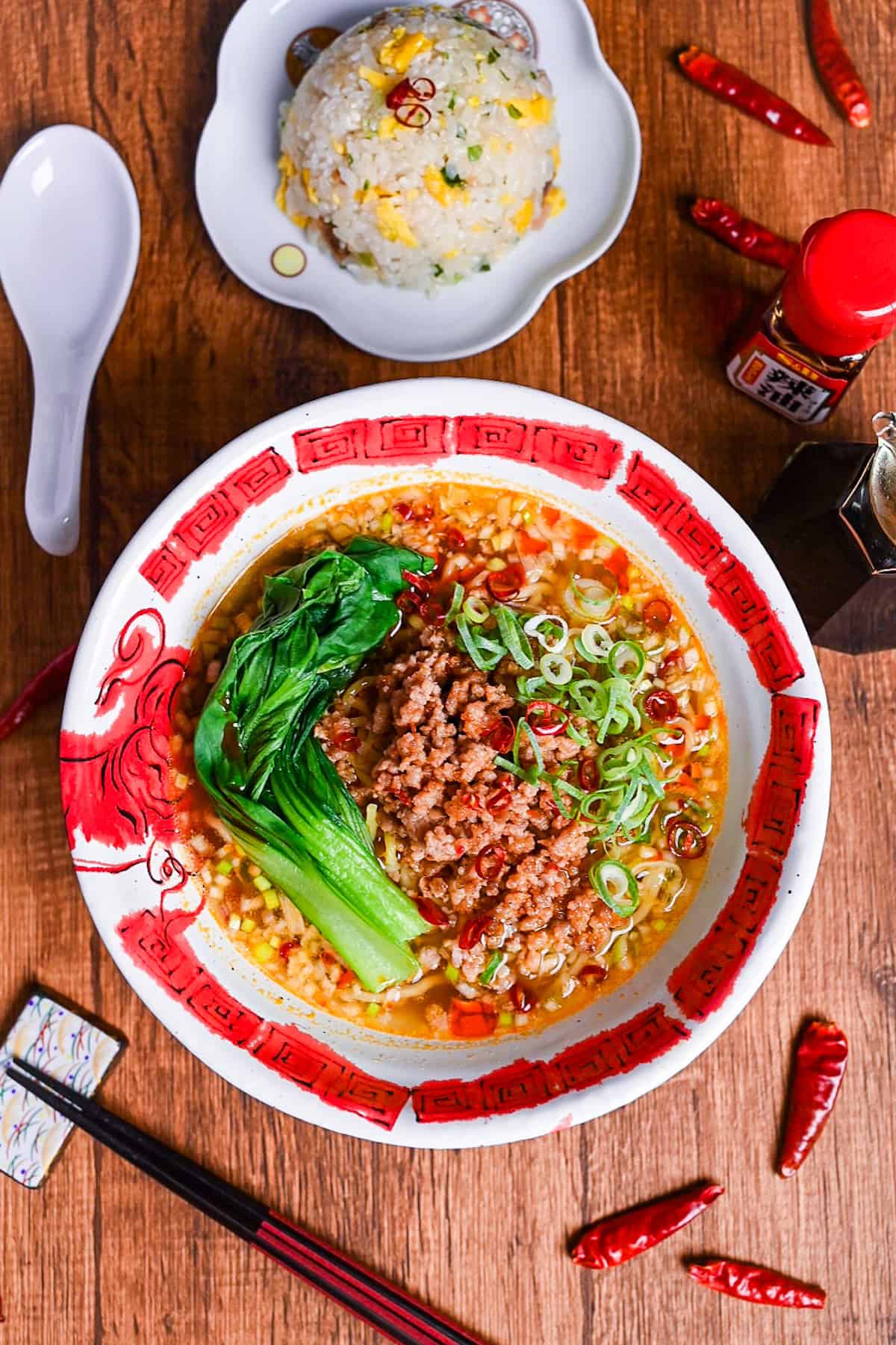
I hope you enjoy this Tantanmen recipe! If you try it out, I’d really appreciate it if you could spare a moment to let me know what you thought by giving a review and star rating in the comments below. It’s also helpful to share any adjustments you made to the recipe with our other readers. Thank you!
More Ramen Recipes
Want more inspiration? Explore my Ramen Recipe Roundup for a carefully selected collection of tasty recipe ideas to spark your next meal!

Tantanmen (Tan Tan Ramen)
Equipment
- Noodle strainer
Ingredients
Meat
- 30 g Japanese leek (naganegi) white part
- 1 tsp toasted sesame oil
- 150 g ground pork see note for vegetarian option
- 1 pinch salt and pepper
- 1 pinch sugar
- 1 dash Japanese soy sauce (koikuchi shoyu)
- 1 tsp grated ginger root or ginger paste
- 1 tsp grated garlic or garlic paste
- 1 tbsp chili bean sauce (toban djan)
Broth
- 4 tbsp sesame paste (nerigoma) (nerigoma) or smooth peanut butter
- 2 tsp ground sesame seeds
- 2 tbsp tsuyu sauce (noodle soup base) or soy sauce
- ½ tsp rice vinegar
- 2 tsp chili oil (rayu)
- 4 tsp Chinese-style chicken bouillon powder see note for vegetarian option
- 600 ml water
Tantanmen
- 2 portions ramen noodles
- 100 g bok choy (pak choy)
- 2 tbsp finely chopped green onions
- chili oil (rayu)
My recommended brands of ingredients and seasonings can be found in my Japanese pantry guide.
Can’t find certain Japanese ingredients? See my substitution guide here.
Instructions
Seasoned Meat
- Finely dice the white part of 30 g Japanese leek (naganegi).

- Heat a frying pan on medium heat and add 1 tsp toasted sesame oil. Once hot, add 150 g ground pork with 1 pinch salt and pepper and fry until sealed.

- Add half of the finely diced green onion, 1 pinch sugar, 1 dash Japanese soy sauce (koikuchi shoyu), 1 tsp grated ginger root, 1 tsp grated garlic and 1 tbsp chili bean sauce (toban djan).

- Stir fry until the liquid is completely reduced, then remove from the heat and place a lid on top to keep it warm.

Tare and Broth
- Bring a pot of water to a boil for your noodles. While you wait, prepare the serving bowls and add the following to each bowl to make the "tare": 1 tbsp tsuyu (or soy sauce), 1 tsp ground sesame seeds, ¼ tsp rice vinegar, 1 tsp chili oil, 2 tbsp sesame paste (or smooth peanut butter) and divide the other half of finely diced green onion between each bowl. Whisk thoroughly.

- Boil 600 ml water for the broth and mix in 4 tsp Chinese-style chicken bouillon powder. Mix until dissolved and then pour 300ml into each serving bowl. Mix until well combined. (If using dry noodles, I recommend doing this step later when the noodles are almost ready.)

Noodles
- Wash 100 g bok choy (pak choy) and cut off the roots.

- Boil 2 portions ramen noodles and set a timer for 1 minute less than the time stated on the packaging.

- When the timer goes off, add the pak choi to the pot and cook for the remaining 1 minute. Remove from the heat and drain the water.

- Divide the noodles between each bowl and top with the seasoned pork.

- Place the blanched pak choi on top and garnish with 2 tbsp finely chopped green onions and a drizzle of chili oil (rayu).

- Enjoy!
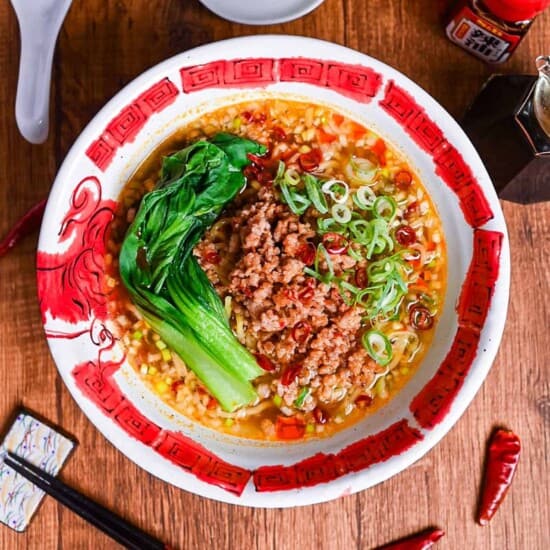



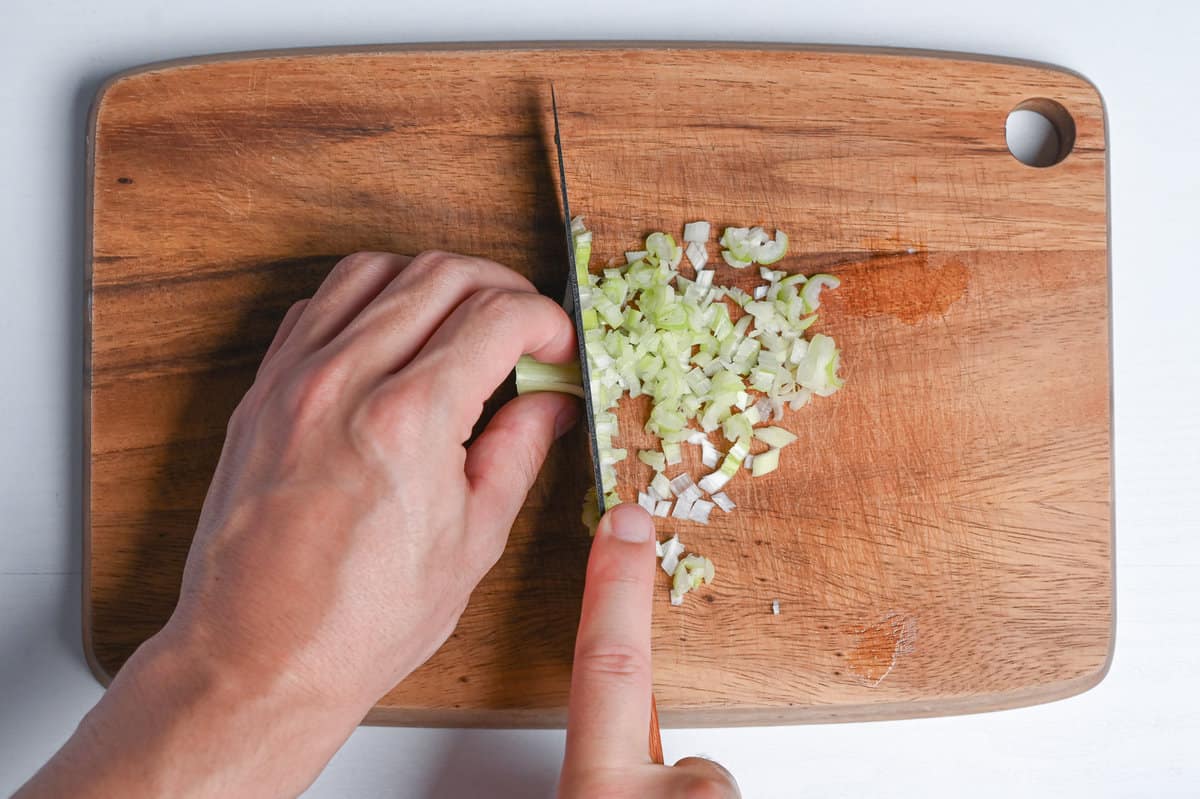
So delicious and easy to make! Will definitely be making this a lot from now on!
Thank you so much for the review, I’m so happy you liked it! 😀
This was super easy and tasted phenomenal! I was curious about the peanut butter but it turned out delicous. I will be making this again.
Hi Morgan.
Thank you so much! I’m glad you enjoyed the recipe 🙂
So delicious will make it again for sure !!!
Hi Cynthia,
Thank you for trying this recipe! I’m glad you enjoyed it! 🙂
Yuto
Everyone’s favourite here, way better than any takeout and so easy.
Hi Peti,
I’m so happy to hear that! Knowing it’s become a favorite means a lot, thank you for sharing that with me! 🙂
Yuto